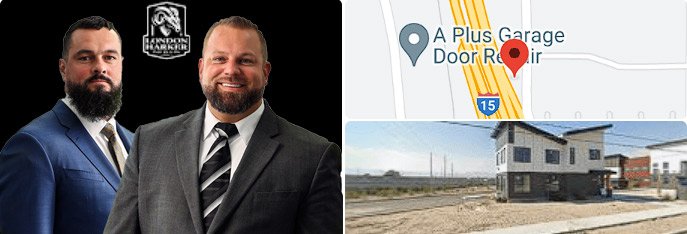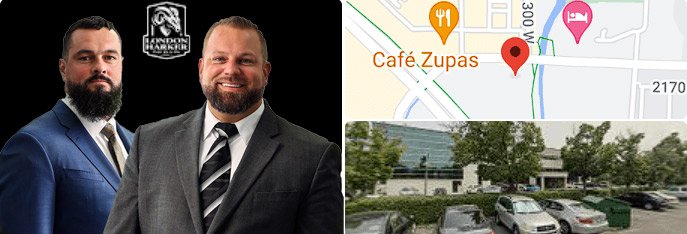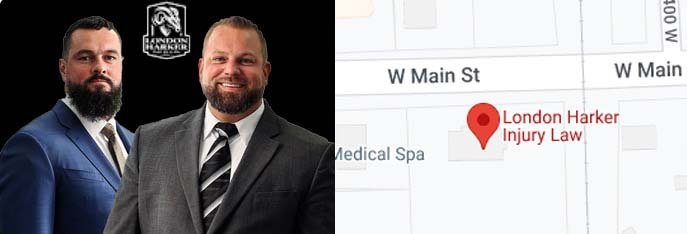Posted on Saturday, October 4th, 2025 at 12:13 pm
Utah is a haven for cyclists, with scenic canyon routes and practical city corridors for commuting to work or school. Bicycling is affordable, eco-friendly, and exhilarating—but riding alongside traffic comes with real dangers. With serious bike accidents on the rise, Utah riders need to understand their legal protections, their duties under state law, and practical safety steps to reduce crash risk.
If you or a loved one has been hurt in a bike crash, the attorneys at London Harker Injury Law offer free consultations and can explain your options.
The Legal Landscape: Cyclists’ Rights and Duties in Utah
Under Utah law, a bicycle is legally treated as a vehicle. Riders have the same rights—and many of the same duties—as drivers. Core rules are found in Utah Code Title 41, Chapter 6a, Part 11.
Core Duties for Utah Cyclists
1) Riding Direction & Lane Position
- Ride with traffic (never against it).
- Keep as far right as practicable or use a bike lane when provided.
- Exceptions: passing, preparing for a left turn, avoiding hazards, and on lanes too narrow to safely share side-by-side.
Authority: Utah Code § 41-6a-1105
2) Required Equipment & Night Visibility
- From 30 minutes before sunset to 30 minutes after sunrise or when visibility < 1,000 ft:
- White headlight visible from 500 ft
- Red rear light or reflector visible from 500 ft
- Side reflectors
- Brakes must stop the bike within 25 ft from 10 mph on dry, level pavement.
Authority: Utah Code § 41-6a-1114
3) Hand Signals
Signal turns/lanes changes and stops at least two seconds beforehand. You may keep both hands on the bars if needed for control.
Authority: Utah Code § 41-6a-1112
4) Sidewalks & Pedestrians
Unless restricted locally, cyclists may use sidewalks but must yield to pedestrians, give an audible signal when overtaking, and ride at a safe speed.
5) Parking
Permitted on sidewalks (if not blocking pedestrians) and in legal street parking if within 12 inches of the curb and not blocking vehicles.
Essential Legal Protections for Utah Cyclists
1) Three-Foot Passing Rule
Drivers must leave at least three feet when passing. They may cross the centerline when safe to give room.
Authority: Utah Code § 41-6a-706.5
2) Protection from Harassment
It’s unlawful to intentionally distract, threaten, or force a cyclist off the roadway.
3) Dooring Prevention
Vehicle occupants must not open doors unless safe and clear of bicycle traffic. Cyclists should keep a buffer from parked cars.
Modern Laws at Intersections
- Stop-as-Yield: Cyclists may treat stop signs as yield signs when the way is clear and others have right-of-way.
- Red Light Exception (Detection Failure): Cyclists 16+ may proceed cautiously after a full stop and ~90 seconds if the signal won’t detect them and no one else has right-of-way.
Common Causes of Bike Accidents in Utah
- Motorist negligence: distracted driving, failure to yield, impairment, speeding, tailgating, road rage.
- Intersection conflicts: right-hook and left-turn crashes.
- Reduced visibility: a large share of severe crashes happen between 6 pm and 6 am.
- Road hazards: potholes, gravel, debris, drainage grates, and uneven pavement.
Best Practices to Reduce Risk
- Be seen: daytime running lights, reflective gear, bright apparel.
- Be predictable: hold a straight line; avoid weaving around parked cars.
- Communicate: consistent hand signals; make eye contact at intersections.
- Defensive mindset: assume drivers may not see you; plan an escape route.
Helmets, Comparative Negligence, and Injury Claims
Utah does not require bicycle helmets by statute, but they’re proven to reduce head injury risk significantly.
Utah follows modified comparative fault: you can recover damages if you are < 50% at fault; your recovery is reduced by your fault percentage.
Authority (comparative fault): Utah Code § 78B-5-818
Helmet use & claims: Not wearing a helmet isn’t illegal, but insurers may argue it worsened injuries. Wearing one shows you took reasonable precautions.
What to Do After a Bike Accident in Utah
- Call 911 and get medical care (document injuries).
- Get the driver’s info and witnesses; photograph the scene, vehicles, your bike, and injuries.
- Save evidence: damaged gear, clothing, GPS data, and receipts.
- Avoid recorded statements to insurers until you understand your rights.
- Consult an attorney to protect your claim and handle insurers.
Utah’s no-fault (PIP) benefits may cover initial medical bills, but serious injuries often exceed these limits. An attorney can seek additional compensation from the at-fault driver.
How a Bicycle Accident Lawyer Helps
- Liability investigation: police reports, camera/telemetry/video, reconstruction, roadway design issues.
- Comparative fault strategy: countering blame-shifting and helmet arguments.
- Damages proof: medical documentation, wage loss, future care, pain and suffering.
- Negotiation & litigation: presenting a compelling claim or taking your case to court.
For help now, contact London Harker Injury Law for a free case review.
Key Utah Bicycle Law References & Safety Resources
- Utah Code Title 41, Chapter 6a, Part 11 (Bicycle Laws)
- Bicycles as Vehicles – § 41-6a-1102
- Riding Position/Right-Hand Rule – § 41-6a-1105
- Three-Foot Passing – § 41-6a-706.5
- Lighting Requirements – § 41-6a-1114
- Bike Utah
- Bike Law: Utah Bicycle Laws
- Utah Department of Public Safety – Road Respect
Injured in a Bike Accident? Get Help Today.
Talk to a Utah bicycle accident lawyer about your rights, deadlines, and next steps. Your consultation is free.
Visit LondonHarker.com or call 77-CAR-CRASH.
Utah Bike Accident FAQ
Do cyclists have the same rights as drivers in Utah?
Yes. Bicycles are treated as vehicles with similar rights and duties under Utah law.
How much space must a driver give when passing a cyclist?
At least three feet, and a driver may cross the centerline when safe to provide room.
Is a bike helmet required by Utah law?
No, but helmets significantly reduce the risk of head injury and strengthen your safety profile in a claim.
What if the traffic light won’t detect my bike?
After stopping and waiting about 90 seconds, cyclists 16+ may proceed cautiously when it’s safe and no one else has the right-of-way.
Can I recover damages if I’m partly at fault?
Yes, as long as you are less than 50% at fault. Your recovery is reduced by your fault percentage.



